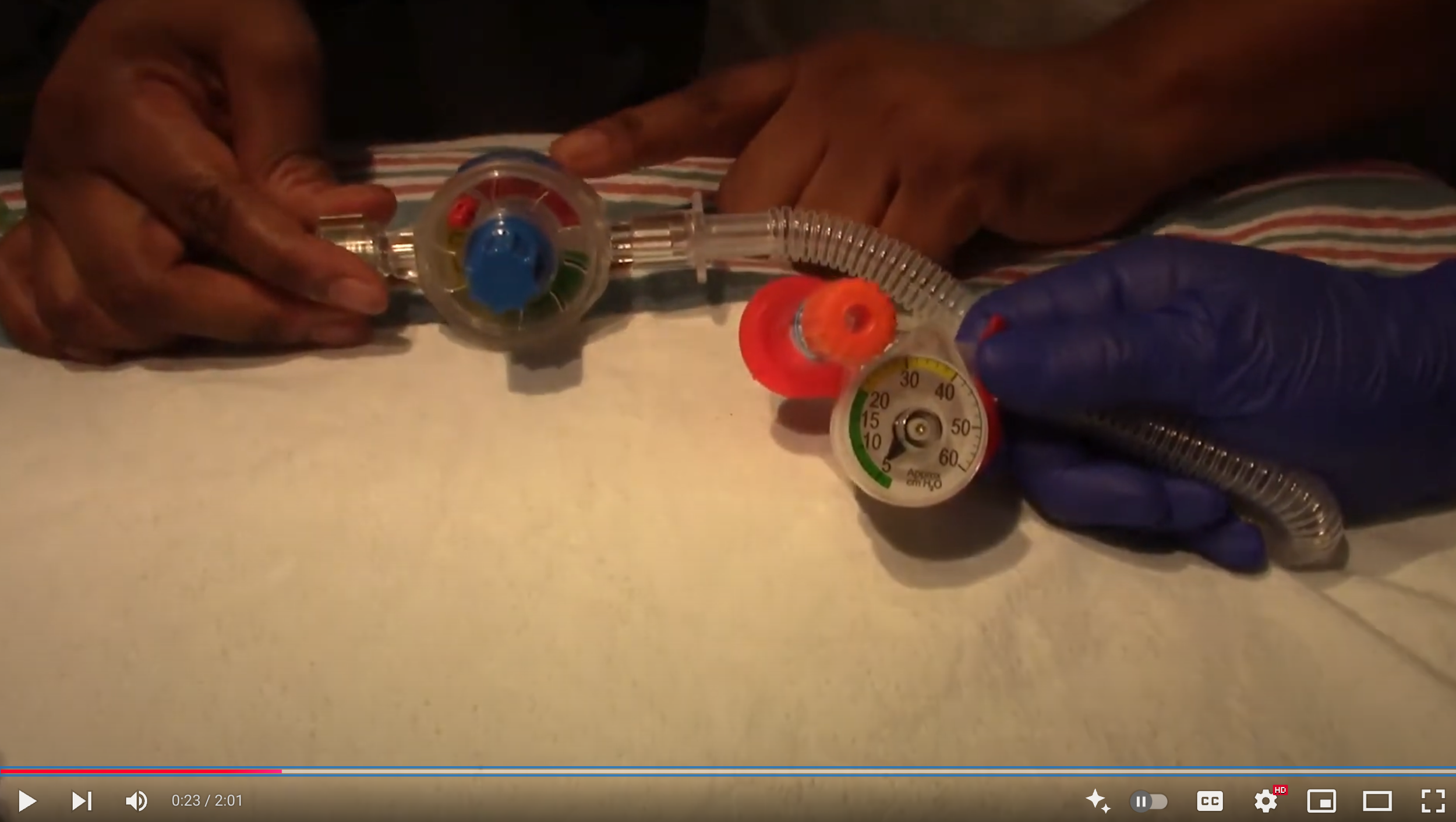T-Piece Resuscitator
Equipment
Complete post test after you read this module. Save your certificate of completion!
T-Piece Resuscitator
Overview:
The T-piece resuscitator, also known as a T-piece device or T-piece resuscitator system, is a medical device used in neonatal and pediatric care for respiratory support and resuscitation. It is designed to deliver a controlled and consistent flow of gases to support breathing in newborns and infants.
1. Key features and aspects of the T-piece resuscitator:
a. Design:
The T-piece resuscitator consists of a T-shaped circuit with adjustable controls for delivering oxygen and air.
It typically includes a pressure manometer to monitor and adjust the inspiratory pressure.
b. Function:
The device is used to provide positive pressure ventilation to infants, especially those in the Neonatal Intensive
Care Unit (NICU).
It allows healthcare providers to manually control and adjust the delivered pressure, volume, and flow of gases
during respiratory support. You can give CPAP with this device.
c. Use in NICU:
T-piece resuscitators are commonly used in the NICU setting for preterm infants or those born with respiratory distress.
They offer a more controlled and precise method of delivering respiratory support compared to other ventilation methods.
d. Adjustability:
The T-piece resuscitator allows for easy adjustment of parameters such as inspiratory pressure, expiratory pressure, and
positive end-expiratory pressure (PEEP).
Healthcare providers can tailor the ventilation settings to meet the specific needs of the infant.
e. Monitoring:
The pressure manometer helps in monitoring the inspiratory pressure, ensuring that it remains within safe and effective ranges.
Continuous monitoring allows healthcare professionals to make real-time adjustments based on the infant's respiratory response.
2. Patient Safety:
The T-piece resuscitator contributes to patient safety by minimizing the risk of overinflation or excessive pressure during ventilation.
Proper training ensures that healthcare providers can respond appropriately to the unique respiratory needs of neonates.
3. Set-Up Procedure:
1.Connect tubing from blender to gas inlet port.
2. Connect patient supply line with T-piece to the gas outlet port.
3. Adjust gas supply to a desired flow rate between 5 and 15 liters per minute. Average flow rate should be approximately 8-10 liters per minute. Always see IFU for each device.
4. To set PIP, continue to occlude PEEP cap or patient connection on T-piece. A PIP of approx. 20 mm Hg is an appropriate place to start in most cases.
5. Adjust PIP control knob see counterclockwise until the peak inspiratory pressure is set to desired starting pressure to ventilate infant.
7. To adjust PEEP turn PEEP cap to adjust PEEP level to desired setting (usually 3-5 cm H20).
8. Attach appropriate size mask for infant to T-piece. If intubation is required, attach T-piece directly to endotracheal tube adaptor.
9. The breath rate and I/E ratio are determined by the frequency and length of time occluding the T-piece with the thumb or forefinger. Further adjustments in PIP or PEEP will be based on the infant’s response as determined by oxygen saturation, heart rate, patient color and breath.
There is no test on this module.



